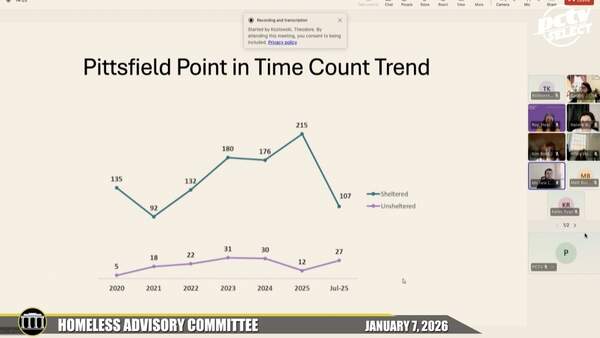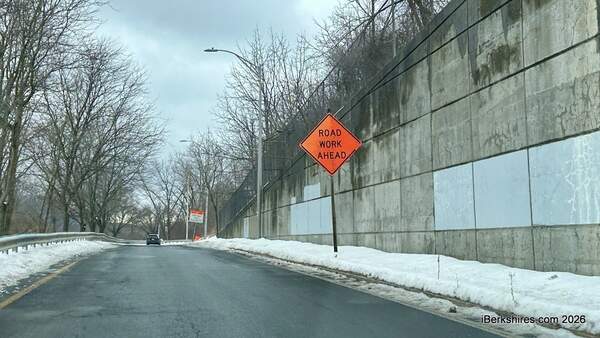Pittsfield School Committee Accepts New Cell Phone Regulations
PITTSFIELD, Mass. — The district will soon use a tiered cell phone policy that grants more freedom as grades progress.
Last week, the School Committee accepted a cell phone response plan after administrators were tasked with reviewing Pittsfield Public School's policy on the devices. It will go into play for the new school year that starts next week.
Superintendent Joseph Curtis agreed to return in about a month with an update on the implementation and include updates in his monthly report.
"Teachers and educators have seen an increase in students distracted by phones in the classroom," Deputy Superintendent Marisa Mendoza said.
"And so, in partnership with the (United Educators of Pittsfield,) the district administrative teams for schools spent time thinking about a response plan."
Cell phones are not allowed in elementary schools including during lunch, recess, and field trips. In middle schools, phones are to be silenced and placed in classroom pocket charts during instruction time and can only be used during lunch and recess. Phones are to be silenced and placed in bags in high schools and can be used during transitions, lunch, and before and after school.
There are three tiers of intervention for each school division that utilize log entries for tracking higher-level violations. Yondr cases, which lock phones for a designated amount of time, are among the consequences for repeat offenders.
Mendoza said some schools already have plans in place and whether they were implemented with fidelity is the question.
She explained that the tiered system was regarded as the best way to approach the issue.
"If you move to the middle school plan, you will see an adjustment and so we also looked at this as a consideration of we have an obligation as schools to not just academically work with students but to also think about social skills and the soft skills that are necessary to learn for when they're adults," she said.
"Whether they're in college, career, or the military, they need additional skills than the academics and so part of this we recognize is how to manage cell phones on the job, in the workplace, in the environment and we do feel that we can take responsibility for this and support students in learning how to navigate that."
Committee members emphasized the importance of a unified front.
Daniel Elias felt that it has to be a cooperative effort across the board that is backed by the administration to the fullest.
"And I think that's the only way something like this could work if it actually is unified and done by all," he said.
"Many times I've seen over the years, we've done things and it's failed because it's not followed by everyone and it's not backed up by administration and us so that is the most important piece of this. Again, many plans will work. Who really knows at this point? All you can do is try some things. I'm not certain it will work but I view it as a humane try and I think the layers of progression from elementary to high school show some responsibility and some decency."
Sara Hathaway said "consistency" will be a watchword this year and that all teachers need to equally enforce the rules.
"If one teacher decides to be the nice one who lets the kids have their phones for 15 minutes at the end of class, the whole house of cards will collapse," she said. "So we all have to be consistent and say 'It's not that I'm not nice, it's that this is the policy and we're all going to live with the policy.'"
The UEP's biggest concern is ensuring that administrators respond to the log entries on a consistent basis and do not let the system falter. It was pointed out that the district is using a new system that makes logging and reviewing infractions simpler.
"The reality is that there does need to be support above the classroom in addition to a classroom teacher," Curtis said.
Mendoza reported that if a great majority of students are not adhering to the rules then the next step would be implementing Yondr cases for all students. This knowledge she said may push students to encourage compliance so that they can maintain some access to their phones.
Children as young as fourth grade generally have access to a cell phone. In planning, administrators were sensitive to the fact that many families don't have landlines anymore and some use a phone to maintain communication with parents for safety reasons.
It was emphasized that emergency communications must come through the district and avoid misinformation.
"I think that the fact that the administration has come up with grade-level specific plans is valuable," Chair William Cameron said. "Obviously dealing with with elementary students is quite different from dealing with high school students and the school climates are very different."
However, he is concerned about the complexity of the plan.
"I think that everyone in certainly the secondary schools knows these are a problem. The issue has been that there are a lot of other problems and this is not the only one that anyone's going to have to deal with," he said.
"And so I don't know that an admonition to administrators, now you follow these rules now with backup the teachers, is going to be effective when there are multiple things that the administrators have to deal with going on in the course of a day and it may sound draconian, it may sound like I'm a dinosaur. I think it will be interesting to see how this works because it seems to me too complicated to be effective over the long haul."
The cell phone policy conversation began earlier this year when the committee made a recommendation to revisit it.
A couple of months ago, teachers came to the committee in droves to speak about how cell phone use is out of control. They cited issues with excessive phone use disrupting education, social and emotional health, and safety.
The committee then requested that administrators review the policy and bring back an updated plan to this meeting.
Enc. No. 3, Cell Phones Res... by Brittany Polito
Tags: phone,















